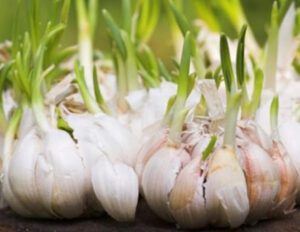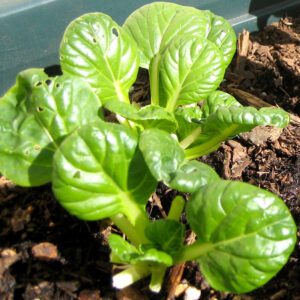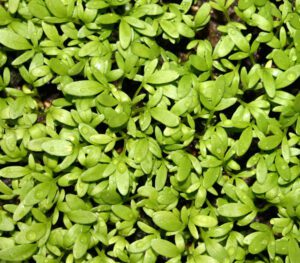Gardening with students is an excellent way to create more awareness about nature. However, you will need to deliver such lessons in a captivating manner to arouse students’ interest in gardening.
Like a regular classroom, you should lead by example to help students understand the essential gardening steps from garden preparation to maintenance.
Taking them through such steps gradually enhances their mastery of the concepts you want to teach and makes learning about gardening more engaging and enjoyable. Here are tips to help deliver gardening lessons effectively.
Read Books About Gardening
Before introducing students to an actual garden, it is essential to encourage them to read gardening books. Having prior theoretical knowledge makes understanding gardening processes easy.
Preferably, they should be introduced to books with descriptive images to help them put things into perspective before going to the garden physically.
Introducing gardening concepts through books also helps with mental preparation since students will hardly be overwhelmed when they know what to expect. Books also help learn more about pests and weeds and how they look, making identifying them easy when seen physically.
Set Rules
Gardening helps students develop a certain level of discipline, and having garden rules can contribute to this. Therefore, when working with students, it is essential to first establish ground rules on the do’s and don’ts of gardening.
The rules should act as guidelines for managing gardening equipment and approaching various gardening activities. Some great gardening rules include wearing proper shoes to the garden, washing hands before and after gardening, using pathways, and not picking and eating unwashed fruits when working in the garden.
These rules are essential in helping students become better at gardening and avoid accidents. When establishing the rules, it is best to include the students in the process to ensure they interact with the regulations more and remember them.

Provide Appropriate Tools and Safety Gear
A paper writer with the right writing resources archives an efficient writing process and delivers quality papers. Similarly, gardening with appropriate tools helps achieve results efficiently. Inappropriate tools, such as heavy or oversized equipment, will make gardening unenjoyable, and the students will not do much in the garden.
Besides, while gardening may be fun, it can also be risky due to unforeseen accidents. Therefore, giving them safe gardening tools and safety gear, such as sizeable gloves, hats, and sunscreen, is essential.
Additionally, you should enlighten them about garden safety and the appropriate use of garden tools to avoid injuries and damage. Most accidents can be avoided if students know various safety measures they should apply during their time in the garden area.
Allow Students to Own Personal Tools
Getting your tutees their tools is an essential motivational factor. Kids are fascinated by such ownership and will always look forward to gardening sessions. It is much easier to teach them how to properly store gardening tools if they have personal gardening tools since they will feel obligated to ensure they are stored well.
Assign Roles and Responsibilities
Act as a facilitator by ensuring the students are more involved instead of doing every task for them. You can divide them into groups and assign roles to promote responsibility and skill development. For better learning, you can rotate the teams to ensure everybody gets vast experience in various gardening activities.
Part of assigning responsibilities includes involving the tutees in different decision-making processes, such as picking out plants and deciding where to plant them. They can also solve garden-related problems, such as determining how to control pests or designing plant labels.
Also, create a calendar for the groups or individual students, as it will help maintain interest and care for the plants. As part of assigning roles, you can also allocate gardening spaces where each student has a space of their own with plants that they have to take care of.
Allow them to decorate their area and design it how they want to promote creativity and responsibility. However, if the space is limited, you can explore other gardening ways, helping them design a raised bed or container garden.
Choose the Right Plants
Kids are usually beginners in gardening; therefore, you need to start them with plants that do not require much effort. For instance, use plants that grow fast, like radishes and lettuce, to keep the tutees engaged. Starting with such plants helps them observe the small changes in the plants as they grow.
Introducing them to gardening with plants that take time to develop and require high maintenance may be discouraging. Furthermore, it’s easy to teach basic gardening concepts with fast-growing plants.
Grow Things That Can Be Eaten Raw
Kids enjoy picking and eating things from the garden. Therefore, you need to start them off with fruits and veggies that are safe for raw consumption. Strawberries and carrots can be suitable options since kids mostly enjoy eating them. However, ensure they learn about the benefits of washing fruits and vegetables first before consuming them.
Encourage Messiness
Gardening involves handling dirt; therefore, you must get the students used to dealing with soil and messing with their clothes and hands. Being comfortable in the garden makes them more open-minded and ready to handle any activity.
Allowing the students to make a mess helps them learn more by experimenting with various gardening ideas since they are not afraid to try. Importantly, leave room for mistakes. For example, if poor application of pesticides results in plant deterioration, they will learn how to apply it correctly the next time they are tasked to do it.

Create Clear Pathways
Students should be able to explore the garden freely without many restrictions. Limiting them may lower their passion for learning more about gardening. Therefore, it is best to declare inaccessible areas and create clear pathways to avoid going to such areas.
Explain to the tutees why they cannot access some parts of the garden so they can learn more about how gardening works. Creating pathways also breeds responsibility among students since they will know where they should and should not step.
Encourage Reflection
You can have the tutees recap what they learned through narration or writing to reinforce what they have been taught in the garden. Through narration, they can share with their classmates their experiences in the garden and the critical lessons they took away from the session. For younger pupils, you can have them draw pictures of what they saw in the garden to help jog their memory.
Visit Other Gardens
As part of the learning process, you can visit public and private gardens and planned parks. Allowing students to see a different perspective of gardening helps open their minds to more improvements they can make in their garden.
Moreover, exposing them to different gardens makes them more aware of how their community landscape works, which makes the aspect of gardening more holistic. What’s more, observing how other people maintain their gardens gives them more ideas to incorporate in their gardens.
Incorporate Art and Creativity
Including art and creativity in gardening lessons makes learning more enjoyable. You can apply in-art garden projects such as building scarecrows, molding, painting pots, and making plant prints or natural dyes. Such creative projects help students participate actively in gardening projects, enhancing their passion even more.
They will be looking forward to gardening lessons, making it easy to focus, understand, and memorize the concepts they learn. Making gardening sessions fun also helps you build a team of nature enthusiasts, which is good for environmental sustainability.
Celebrate Achievements
Recognizing individual or group efforts motivates the tutees to continue improving their gardening skills after school. Celebrating their efforts helps them equate gardening to good memories, which can propel their interest in gardening and environmental stewardship.
Honoring their efforts also teaches them to be more appreciative of themselves, which is a skill that students can carry forward. Some of the fun ways to celebrate your tutees’ milestones in gardening include:
- Holding harvest parties where they can share and taste their produce.
- Organizing gardening tours, during which students can give tours to other classes or invite their parents and teachers to show them their projects.
- Hold cooking sessions where students can prepare meals with the produce they have harvested.
- Hold sessions where students can recap and share what they have learned from the gardening sessions.
- Organizing award ceremonies to celebrate tutees with outstanding skills. Some motivating awards include “Most Creative Plant Maker” and “Best Gardener.”
- Organizing art exhibitions to showcase your students’ projects, such as those of plant makers. The art exhibition can display pictures of gardening processes to the point of harvesting.
Gardening is an activity for students, as it can be an excellent way to help them appreciate and conserve their environment. However, their growth and understanding of gardening will be more attainable if the lessons are administered correctly.
Gardening can be done as a hobby or professionally; therefore, empowering students at a young age is essential to help them understand the intricacies of gardening and how they can use their skills to venture into professional gardening. Leading students through gardening lessons involves making them actively take part in various gardening activities and celebrating every milestone.







Thanks a million. Is it ok allowing the students take their own decisions?
Sometimes, not always!